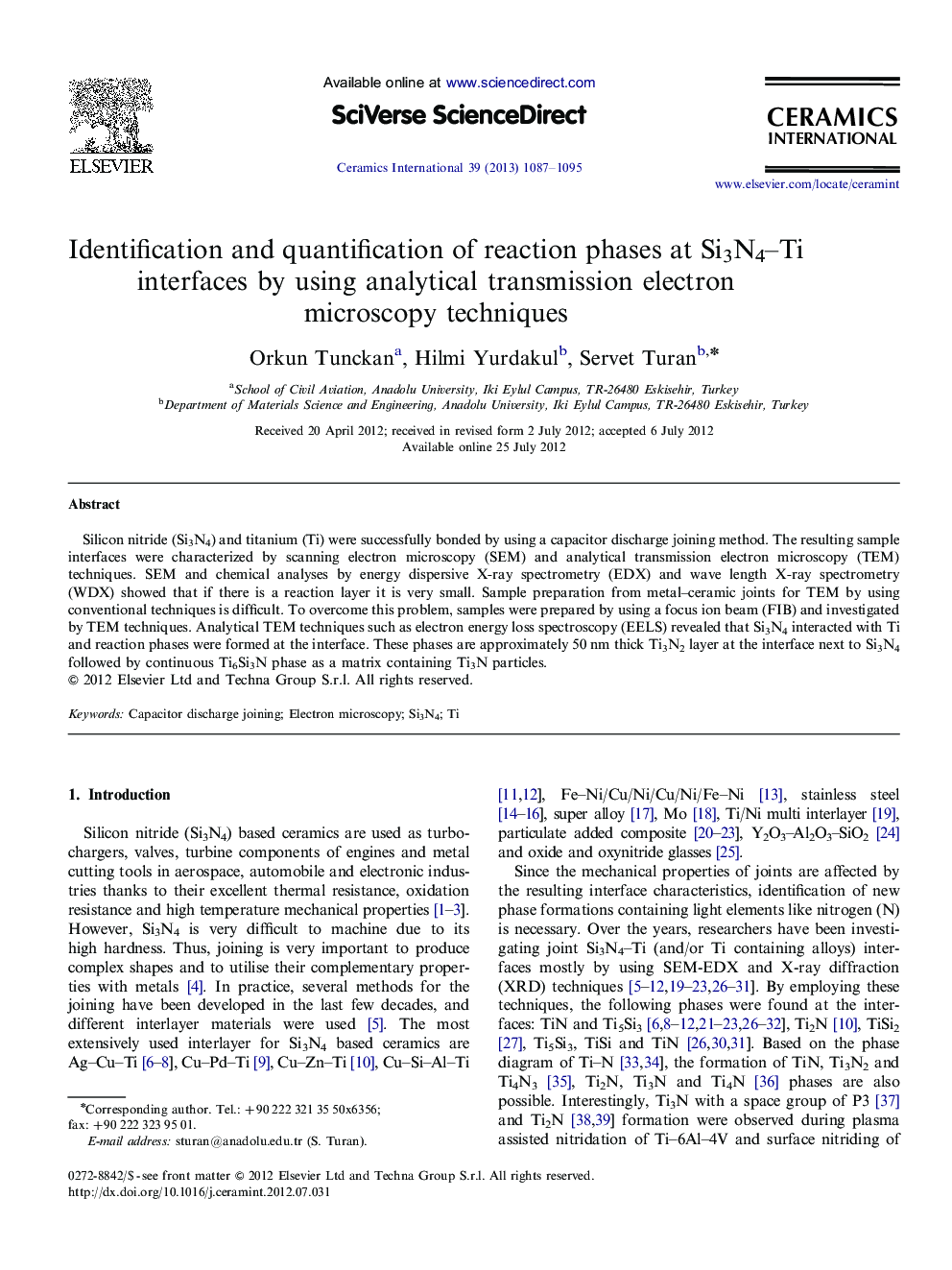| Article ID | Journal | Published Year | Pages | File Type |
|---|---|---|---|---|
| 1462142 | Ceramics International | 2013 | 9 Pages |
Silicon nitride (Si3N4) and titanium (Ti) were successfully bonded by using a capacitor discharge joining method. The resulting sample interfaces were characterized by scanning electron microscopy (SEM) and analytical transmission electron microscopy (TEM) techniques. SEM and chemical analyses by energy dispersive X-ray spectrometry (EDX) and wave length X-ray spectrometry (WDX) showed that if there is a reaction layer it is very small. Sample preparation from metal–ceramic joints for TEM by using conventional techniques is difficult. To overcome this problem, samples were prepared by using a focus ion beam (FIB) and investigated by TEM techniques. Analytical TEM techniques such as electron energy loss spectroscopy (EELS) revealed that Si3N4 interacted with Ti and reaction phases were formed at the interface. These phases are approximately 50 nm thick Ti3N2 layer at the interface next to Si3N4 followed by continuous Ti6Si3N phase as a matrix containing Ti3N particles.
